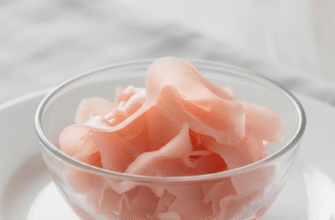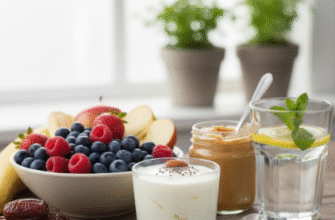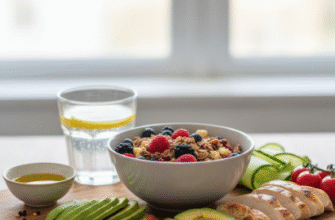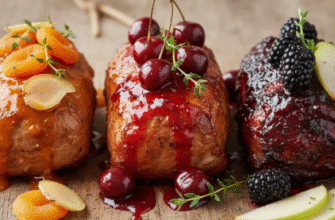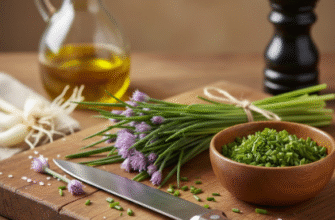Roasted root vegetables are a staple for a reason. Tossed with a little oil, salt, and pepper, then thrown into a hot oven, they transform into sweet, tender morsels with delightfully crispy edges. Carrots, parsnips, sweet potatoes, beets, potatoes, turnips – they all benefit from the magic of high heat. But while delicious on their own, a simple glaze applied towards the end of cooking can elevate them from humble side dish to absolute showstopper. Forget boring steamed veggies; we’re talking about unlocking a whole new level of flavor complexity.
A glaze adds that extra dimension – a sticky, often sweet, sometimes savory, occasionally spicy coating that caramelizes under the heat, clinging beautifully to the contours of the roasted roots. It’s the finishing touch that makes people ask, “What did you do to these vegetables?” The secret isn’t complicated; it usually involves a balance of sweetness, acidity, fat, and aromatics, working together to complement the natural earthiness of the roots.
The Anatomy of a Great Glaze
While recipes vary wildly, most successful glazes for root vegetables share common components:
- Sweetener: This is key for caramelization and balancing earthiness. Think maple syrup, honey, brown sugar, agave nectar, or even date paste. The type of sweetener significantly impacts the final flavor profile.
- Fat: Oil or melted butter helps the glaze coat the vegetables evenly and encourages browning. Olive oil, avocado oil, melted butter, or even sesame oil (for specific flavor profiles) work well.
- Acid: A touch of acidity brightens the flavors and cuts through the richness. Vinegars (balsamic, apple cider, red wine) or citrus juice (lemon, orange, lime) are excellent choices.
- Aromatics & Seasoning: This is where you can get creative! Garlic, ginger, herbs (rosemary, thyme, sage), spices (chili flakes, paprika, cumin, cinnamon), mustard, soy sauce, or miso paste add depth and character. Don’t forget salt and pepper to make all the flavors pop.
Five Flavorful Glaze Ideas to Try
Ready to move beyond basic roasting? Here are a few glaze concepts to get you started. Remember to adjust seasonings to your taste – these are jumping-off points for your own culinary adventures!
1. Classic Maple-Mustard Magic
This is a crowd-pleaser for good reason. The sweetness of maple syrup pairs beautifully with the tangy punch of mustard. It works wonders on almost any root vegetable, but especially parsnips, carrots, Brussels sprouts (okay, not technically a root, but plays well!), and sweet potatoes.
The Mix: Combine equal parts pure maple syrup and Dijon mustard (whole grain mustard adds great texture too). Whisk in a splash of olive oil or melted butter for richness and a dash of apple cider vinegar for brightness. Season with salt and freshly cracked black pepper. A sprig of fresh thyme or rosemary added to the roasting pan complements this glaze wonderfully.
Why it Works: The sharp mustard cuts through the sweetness of both the maple syrup and the naturally sweet roasted roots like carrots and parsnips. The vinegar ensures it doesn’t become cloying, creating a balanced, savory-sweet coating.
2. Sophisticated Balsamic-Honey Bliss
Deep, dark, and delicious. Balsamic vinegar reduces down to a syrupy consistency, concentrating its complex sweet-tart flavor, while honey adds its floral sweetness. This glaze is particularly stunning with beets (creating an earthy jewel-toned delight), carrots, and red onions wedges roasted alongside the roots.
The Mix: Whisk together good quality balsamic vinegar (doesn’t have to be the super expensive aged kind, but avoid the very thin, harsh ones) with an equal amount of honey. Add a clove of minced garlic, a drizzle of olive oil, and a pinch of salt. You could also add a tiny pinch of dried oregano or rosemary for an herbaceous note.
Why it Works: The tangy depth of balsamic provides a sophisticated counterpoint to the honey. When reduced in the oven’s heat, it creates an intensely flavored, almost jammy coating that enhances the natural sugars released by the vegetables during roasting.
Timing is Key! Be cautious when adding glazes containing sugars like maple syrup or honey early in the roasting process. They can burn easily at high temperatures, resulting in a bitter taste and scorched vegetables. It’s generally best practice to roast the vegetables until they are almost tender, then toss them with the glaze and return them to the oven for the final 10-15 minutes of cooking, just long enough for the glaze to thicken and caramelize beautifully without burning.
3. Zesty Soy-Ginger Kick
For an Asian-inspired twist, this glaze brings umami, spice, and warmth. It’s fantastic on sweet potatoes, carrots, turnips, and even chunks of daikon radish. The salty soy sauce base is balanced by sweetness and lifted by fresh ginger and garlic.
The Mix: Combine soy sauce (or tamari for gluten-free) with honey or maple syrup for sweetness. Grate in fresh ginger and garlic – don’t skimp here! Add a splash of toasted sesame oil for its nutty aroma and a tiny bit of rice vinegar for acidity. A pinch of red pepper flakes or a dash of sriracha can be added for heat if desired. Garnish with toasted sesame seeds or chopped scallions after roasting.
Why it Works: The savory depth of soy sauce, the warmth of ginger, the pungent garlic, and the nutty sesame oil create a complex umami bomb. The sweetness prevents the soy from being overpowering and helps create that desirable sticky coating.
4. Bright Herby Lemon-Garlic Goodness
If you prefer something less sweet and more savory and bright, this is the glaze for you. It relies on fresh herbs, pungent garlic, and zingy lemon. Perfect for potatoes (especially smaller new potatoes or fingerlings), parsnips, celery root (celeriac), and carrots.
The Mix: Finely mince several cloves of garlic. Zest and juice a lemon. Chop a generous amount of fresh herbs – parsley, thyme, and rosemary work particularly well together. Whisk the garlic, lemon zest, lemon juice, and chopped herbs with a good glug of extra virgin olive oil. Season generously with salt, pepper, and perhaps a pinch of red pepper flakes for a little background warmth.
Why it Works: This glaze cuts through the richness of roasted vegetables with its bright acidity and fresh herbal notes. The garlic mellows slightly in the heat but remains distinct. It feels lighter than the sweeter glazes but still adds significant flavor and moisture.
5. Smoky Orange-Chipotle Heat
A delightful combination of sweet, smoky, and spicy. The orange provides citrusy sweetness and acidity, while chipotle powder (or adobo sauce) brings a smoldering heat and smokiness. This is incredible on sweet potatoes, butternut squash (again, not a root, but excellent here!), and carrots.
The Mix: Combine fresh orange juice and zest with a sweetener like agave nectar or brown sugar. Whisk in a little olive oil or avocado oil. Add chipotle chili powder to taste – start with a little, as it can be potent – or use a teaspoon or two of the adobo sauce from a can of chipotles in adobo for extra depth. A pinch of cumin or smoked paprika can enhance the smoky notes. Season with salt.
Why it Works: The bright citrus cuts the richness, the sweetener balances the heat, and the chipotle adds a unique smoky dimension that complements the caramelized sugars of the roasted vegetables, especially sweet potatoes.
Tips for Glazing Success
- Don’t Drown Them: You want to coat the vegetables, not soak them. Use just enough glaze to lightly cover each piece. Too much liquid can make the vegetables steam instead of roast.
- High Heat Roasting: Ensure your oven is properly preheated, typically between 400-425°F (200-220°C). This high heat is crucial for achieving tender interiors and caramelized exteriors.
- Spread Them Out: Don’t overcrowd the baking sheet. Give the vegetables space so they roast rather than steam. Use two pans if necessary.
- The Final Touch: As mentioned in the warning block, add the glaze towards the end. Toss the nearly-cooked vegetables with the glaze directly on the hot baking sheet (or transfer to a bowl, toss, and return to the sheet) and roast for another 10-15 minutes until the glaze is bubbling, slightly thickened, and caramelized at the edges.
- Taste and Adjust: Before glazing, taste your mixture! Does it need more salt? More acid? More sweetness? Adjust it until it tastes balanced and delicious to you.
Verified Roasting Principle: Proper roasting requires high heat and adequate spacing on the baking sheet. This allows hot air to circulate around each piece of vegetable, promoting Maillard reactions and caramelization which create deep flavors and desirable textures. Overcrowding leads to steaming, resulting in softer, less flavorful vegetables.
Experiment and Enjoy!
These ideas are just starting points. Feel free to mix and match components. Try different sweeteners, vinegars, spices, and herbs. Add nuts or seeds for texture in the last few minutes. The beauty of roasted root vegetables is their versatility. By mastering a few simple glaze techniques, you can transform this humble side dish into something truly special, adding incredible flavor and excitement to your meals. So preheat that oven, chop those roots, and get ready to glaze your way to deliciousness!
“`

